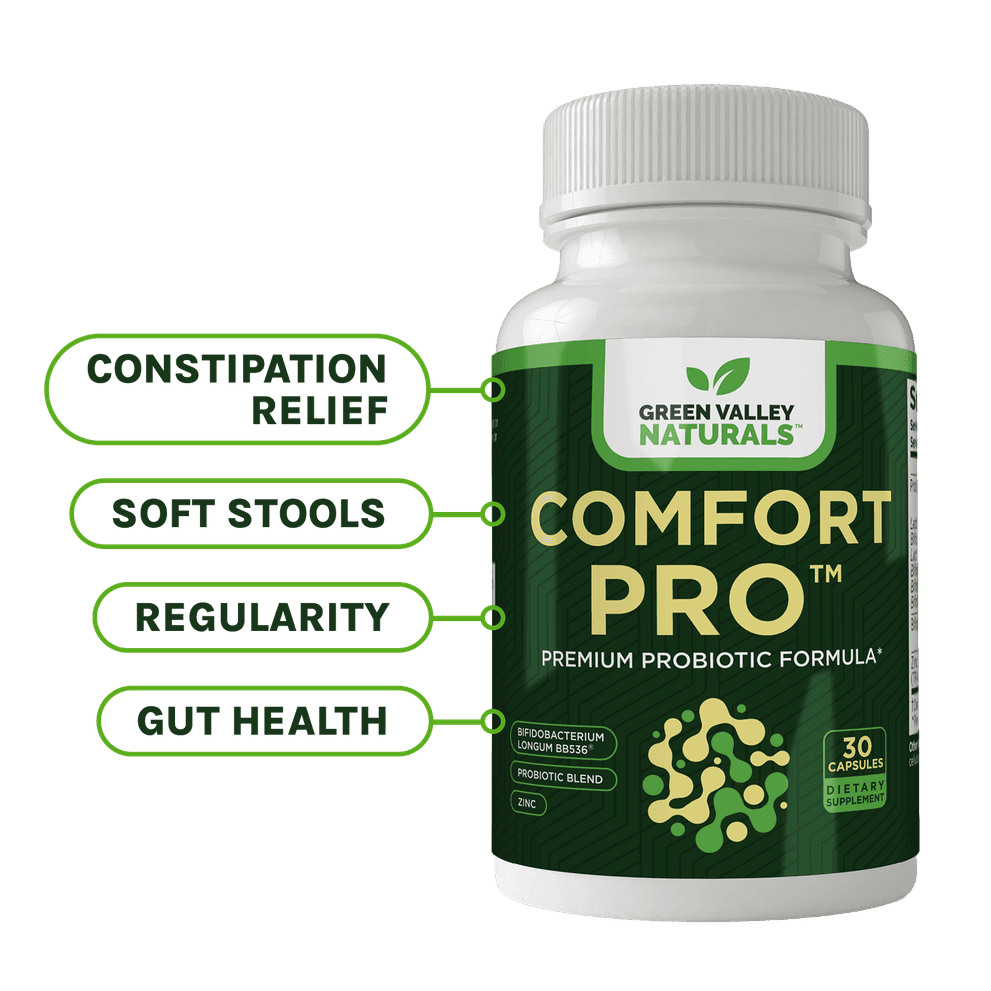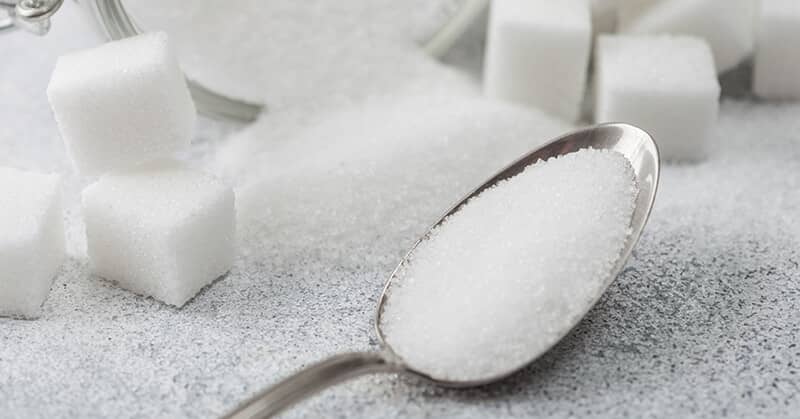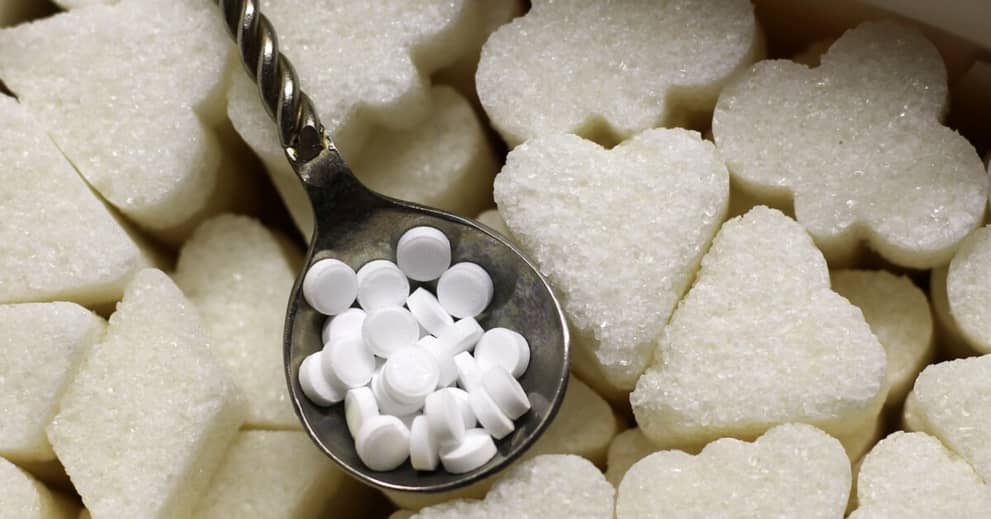
In the aisles of any American grocery store, you'll find high fructose corn syrup (HFCS) lurking in everything from breakfast cereals to salad dressings. This ubiquitous sweetener has become a cornerstone of processed food manufacturing, yet mounting research reveals concerning links between HFCS consumption and serious health complications. As health officials call for change and health-conscious consumers increasingly scrutinize ingredient labels, understanding the real dangers of high fructose corn syrup has never been more critical.
Key Takeaways
High-fructose corn syrup (HFCS) is a liquid sweetener made from cornstarch, containing glucose and fructose, and has been widely used since the 1970s.
High intake of fructose from HFCS leads to increased blood sugar and liver fat accumulation, contributing to obesity, diabetes, and nonalcoholic fatty liver disease.
Natural sugars, such as those found in whole fruits, are generally considered healthier than HFCS and artificial sweeteners.
What Exactly Is High-Fructose Corn Syrup?
High fructose corn syrup is a liquid sweetener manufactured by converting corn starch into glucose through enzymatic processes, then further converting a portion of that glucose into fructose. The result is a highly concentrated sweetener that comes in two primary formulations: HFCS-42 (containing 42% fructose), typically used in processed foods, and HFCS-55 (containing 55% fructose), commonly found in soft drinks and sweetened beverages.
This industrial processing creates a product that differs fundamentally from naturally occurring sugars. Unlike the fructose found in whole fruits, which comes packaged with fiber, vitamins, minerals, and antioxidants that slow absorption and provide nutritional value, HFCS delivers concentrated fructose directly to your bloodstream without any protective nutrients.
The prevalence of HFCS in the American food supply is staggering. Since its introduction in the 1970s, HFCS consumption has skyrocketed by over 1,000%, coinciding with dramatic increases in obesity, diabetes, and metabolic disorders. Today, the average American consumes approximately 60 pounds of HFCS annually, often without realizing it due to its presence in seemingly healthy products like yogurt, granola bars, and whole-grain breads.
The Metabolic Chaos: How Your Body Processes HFCS
While the food industry maintains that HFCS is "natural" and equivalent to sugar, the scientific evidence tells a more complex story. The way our bodies process this concentrated fructose differs significantly from how we metabolize natural sugars found in whole foods, leading to cascading effects on metabolism, liver function, and long-term health outcomes.
Unlike glucose, which can be used by virtually every cell in your body for energy, fructose must be processed almost exclusively by the liver. This creates a metabolic bottleneck that triggers a cascade of harmful effects.
When you consume HFCS, your liver, treating this sudden influx of fructose as a metabolic emergency, rapidly converts it into fat through a process called lipogenesis. This isn't the gradual fat storage that occurs with moderate caloric excess – it's an immediate, overwhelming conversion that can occur within hours of consumption.
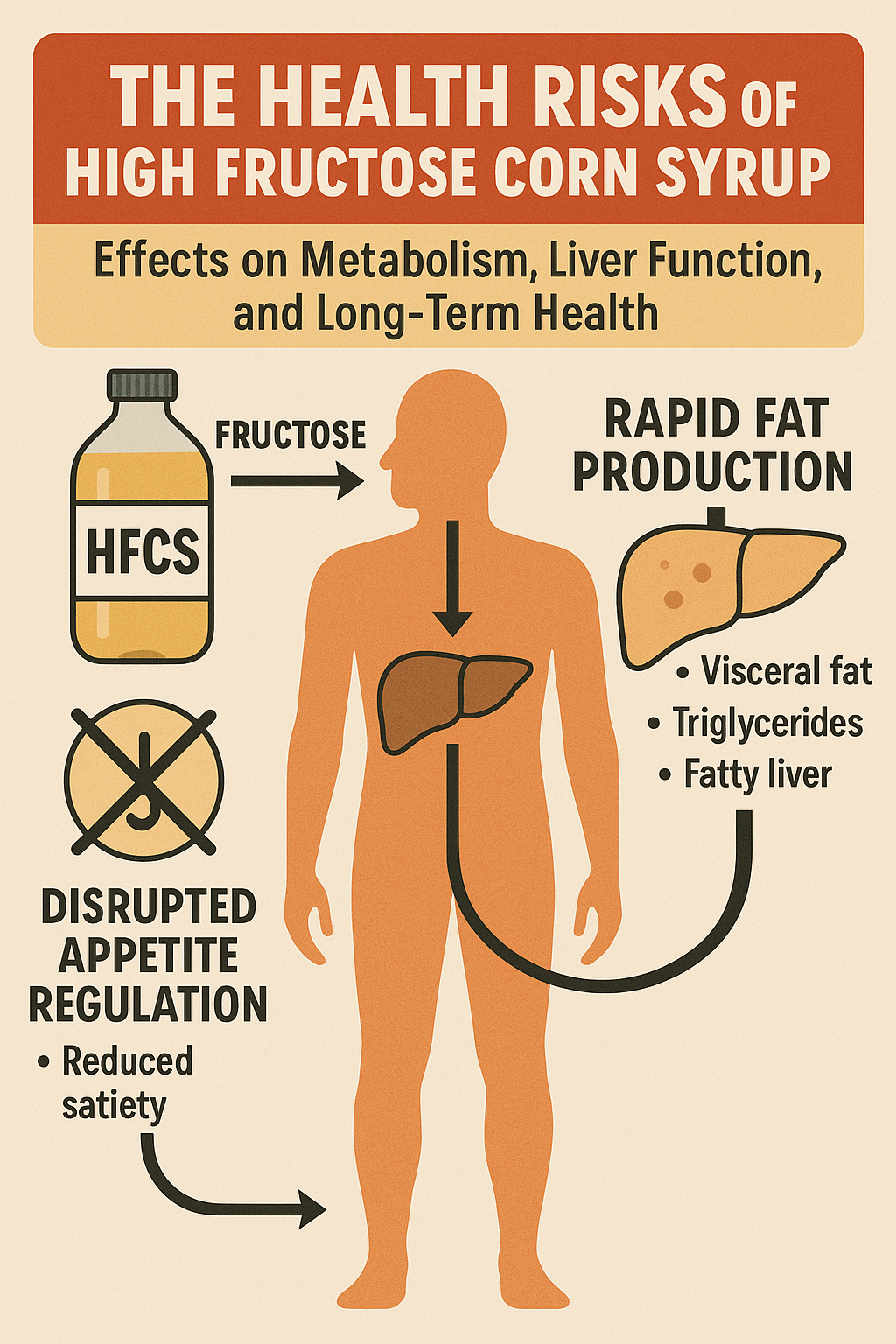
This rapid fat production serves multiple destructive purposes. First, it creates visceral fat deposits around your organs, particularly dangerous belly fat that increases inflammation throughout your body. Second, it generates triglycerides that flood into your bloodstream, elevating cardiovascular disease risk. Third, the fat accumulates within liver cells themselves, creating the foundation for non-alcoholic fatty liver disease.
Perhaps most concerning is how HFCS consumption disrupts your body's natural appetite regulation. Unlike glucose, which triggers insulin release and subsequent leptin production (your satiety hormone), fructose fails to activate these fullness signals. This means you can consume large quantities of HFCS-sweetened foods without feeling satisfied, driving overconsumption and weight gain.
Think about the last time you ate an apple versus the last time you had a soda. With the apple, you probably felt satisfied after one piece – your brain registered "enough" and you naturally stopped eating. But with that soda? You might have easily finished the whole bottle and still felt like you could have another, or found yourself craving something sweet an hour later. This isn't a failure of willpower – it's your brain responding differently to different types of sugar.
Scientists studying metabolism have discovered something fascinating when they put people in brain scanners and give them different sweeteners. When someone drinks a glucose solution, their brain lights up in areas responsible for satisfaction and fullness – the same regions that tell you to stop eating when you've had enough. But when that same person consumes fructose from HFCS, those "I'm satisfied" signals barely flicker. It's as if the brain doesn't even recognize that calories have been consumed, leaving you in a perpetual state of wanting more.
This explains why so many people describe feeling "addicted" to their favorite HFCS-containing foods and drinks. You're not weak or lacking self-control – your brain literally isn't getting the chemical signals it needs to feel satisfied. That second helping of cereal, the afternoon energy drink, the late-night snack attack – these aren't character flaws, they're your confused brain desperately seeking the satisfaction signals that HFCS fails to provide.
Documented Health Risks of HFCS Consumption
The statistics about HFCS-related health problems might feel abstract until they knock on your own door. Maybe it's the moment your doctor mentions "pre-diabetes" during a routine checkup, or when you notice your energy crashing every afternoon despite eating what you thought was a healthy lunch. Perhaps it's watching a loved one struggle with unexplained weight gain or fatty liver disease, wondering how someone who "eats pretty well" could develop such serious health issues.
The truth is, HFCS doesn't announce itself as the culprit. It works quietly in the background, appearing in foods we trust and consume daily – that morning granola bar, the salad dressing at lunch, the "natural" fruit juice we give our kids. Over months and years, this hidden sugar creates a cascade of metabolic changes that can fundamentally alter how our bodies function.
Obesity and Weight-Related Complications
The Framingham Heart Study, tracking participants over decades, found that individuals consuming the highest levels of HFCS-containing beverages showed significantly greater weight gain and waist circumference increases compared to those avoiding these products.
Animal studies provide even more compelling evidence. Laboratory rats fed HFCS-sweetened water alongside regular food gained substantially more weight than rats consuming equivalent calories from other sources. More disturbing, the HFCS-fed animals developed preferential accumulation of visceral fat, the type most strongly associated with metabolic complications and cardiovascular disease.
Insulin Resistance and Type 2 Diabetes
Chronic HFCS consumption creates a perfect storm for insulin resistance development. The rapid conversion of fructose to fat in liver cells interferes with normal insulin signaling pathways. As liver cells become increasingly fatty, they lose sensitivity to insulin's blood sugar regulation signals. This forces your pancreas to produce ever-increasing amounts of insulin to maintain normal blood glucose levels.
Clinical studies following subjects over 10-15 years demonstrate that those consuming the highest amounts of HFCS show significantly elevated risks of developing type 2 diabetes, even after controlling for total caloric intake, body weight, and other lifestyle factors. The risk appears dose-dependent, with each additional serving of HFCS-containing beverages increasing diabetes risk by approximately 18%.
Cardiovascular Disease and Metabolic Syndrome
The cardiovascular implications of HFCS consumption are particularly alarming. The rapid triglyceride production triggered by fructose metabolism directly increases cardiovascular disease risk through multiple mechanisms. Elevated triglycerides promote the formation of small, dense LDL cholesterol particles – the most dangerous type for arterial plaque formation.
Additionally, HFCS consumption triggers inflammatory cascades throughout the cardiovascular system. Studies measuring inflammatory markers, such as C-reactive protein and interleukin-6, consistently show elevated levels in subjects consuming high amounts of HFCS, indicating chronic systemic inflammation that accelerates atherosclerosis development.
The constellation of metabolic changes associated with HFCS consumption – elevated triglycerides, reduced HDL cholesterol, increased blood pressure, insulin resistance, and abdominal obesity – defines metabolic syndrome, a condition affecting over 35% of American adults and dramatically increasing cardiovascular disease and diabetes risk.
Liver Disease and Organ Damage
Perhaps nowhere are HFCS dangers more evident than in liver health. Non-alcoholic fatty liver disease (NAFLD), once rare, now affects approximately 25% of American adults, with HFCS consumption identified as a primary driver. The condition begins with simple fat accumulation but can progress to inflammation (non-alcoholic steatohepatitis), scarring, cirrhosis, and even liver failure.
Research from hepatology centers demonstrates that individuals consuming high amounts of HFCS show liver fat accumulation patterns virtually identical to those seen in alcoholics, leading some researchers to term the condition "fructose-induced fatty liver disease." More concerning, children and adolescents consuming large amounts of HFCS-containing beverages are developing fatty liver disease at unprecedented rates.
The liver damage extends beyond fat accumulation. HFCS metabolism generates harmful byproducts including uric acid, which promotes inflammation and may contribute to gout development. Additionally, the oxidative stress created during rapid fructose processing can damage liver cells directly, accelerating the progression from simple fatty liver to more serious inflammatory conditions.
Emerging Cancer Connections
Recent research has begun exploring potential connections between HFCS consumption and cancer development. Animal studies demonstrate that high fructose intake can accelerate tumor growth in certain cancer types, particularly colorectal cancers.
The proposed mechanism involves fructose's role in promoting inflammation and providing metabolic fuel for rapidly dividing cancer cells. Some cancer cells appear to preferentially metabolize fructose, potentially giving tumors a growth advantage in high-fructose environments. While human studies are still limited, the animal research is compelling enough that major cancer research institutions are launching long-term human studies to investigate these connections.
What Can You Do?
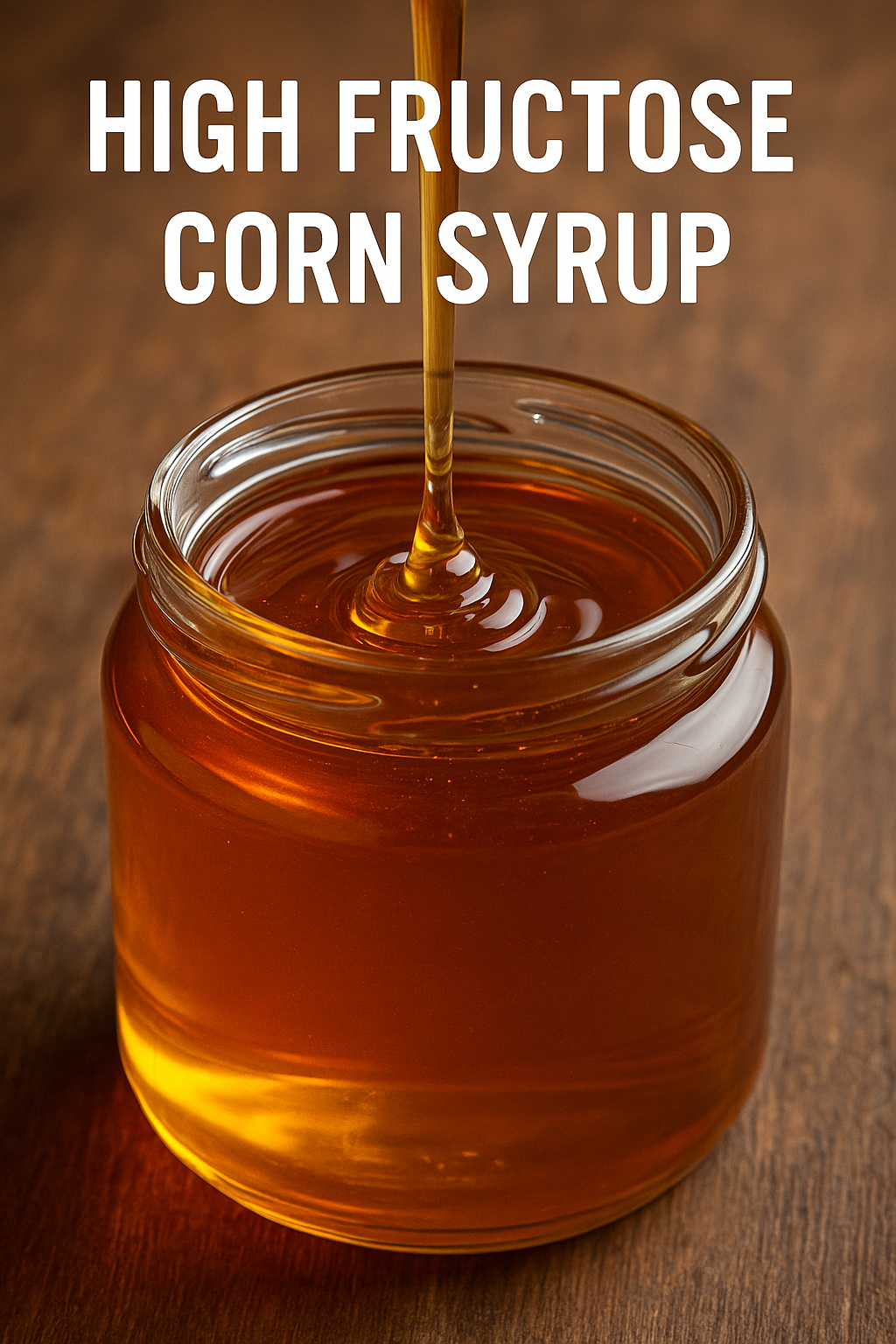
What makes these health consequences particularly heartbreaking is that they are largely preventable. Behind every diagnosis of fatty liver disease in a 30-something parent, every case of childhood diabetes, every heart attack linked to metabolic syndrome, there's often a trail of seemingly innocent food choices that contained far more HFCS than anyone realized. These aren't the results of obvious poor decisions – they're the outcome of a food system that has quietly transformed everyday products into metabolic time bombs.
Reading Labels and Avoiding Hidden HFCS
Reducing HFCS intake requires vigilant label reading, as food manufacturers use various names to disguise its presence. Standard label terms for HFCS include "corn sweetener," "corn syrup," "corn syrup solids," "fructose," and simply "natural sweetener." Some products may list multiple corn-derived sweeteners, effectively concentrating HFCS content while keeping individual ingredients lower on the ingredient list.
The most HFCS-dense products include soft drinks, fruit-flavored beverages, flavored yogurts, breakfast cereals, granola bars, cookies, crackers, salad dressings, barbecue sauces, ketchup, and many bread products. Surprisingly, many products marketed as "healthy" or "natural" contain significant HFCS amounts, including some organic foods where HFCS might be listed as "organic corn syrup."
Effective HFCS avoidance strategies include:
Eliminate Sweetened Beverages: Soft drinks, sports drinks, flavored teas, and fruit drinks represent the largest source of HFCS in most diets. Replacing these with water, unsweetened tea, or sparkling water with fresh fruit can dramatically reduce HFCS intake.
Choose Whole Foods: Fresh fruits, vegetables, lean proteins, and whole grains naturally contain no HFCS. Building meals around these foods automatically reduces exposure to processed sweeteners.
Cook at Home: Preparing meals from basic ingredients gives you complete control over sweetener content. Even simple cooking techniques can create flavorful foods without relying on HFCS-containing sauces and seasonings.
Read Ingredient Lists: Focus on products with short ingredient lists featuring recognizable foods. When sweeteners are necessary, look for products using small amounts of less processed options like honey, maple syrup, or organic cane sugar.
Monitor Portion Sizes: Even when consuming products containing natural sweeteners, controlling portions helps maintain reasonable daily sugar intake.
Healthier Choices
Transitioning away from HFCS doesn't require eliminating sweetness from your diet entirely. Natural alternatives can provide satisfying flavors while delivering additional nutrients and avoiding the metabolic chaos created by concentrated fructose.
Fresh and Frozen Fruits: Nature's candy provides fructose alongside fiber, vitamins, minerals, and antioxidants. The fiber content slows fructose absorption, preventing the metabolic overwhelm associated with HFCS consumption.
Dates and Date Paste: Medjool dates can be pureed into a paste that provides intense sweetness along with potassium, fiber, and antioxidants. Date paste works well in baking and can replace HFCS in many recipes.
Raw Honey: In small quantities, raw honey provides sweetness along with enzymes, antioxidants, and antimicrobial compounds. Choose local, unprocessed varieties when possible.
Pure Maple Syrup: Real maple syrup contains minerals like manganese and zinc alongside its natural sugars. Use sparingly as a flavor accent rather than a primary sweetener.
Stevia and Monk Fruit: These plant-derived sweeteners provide intense sweetness without calories or fructose. They work well for beverages and can be combined with small amounts of natural sweeteners for baking.
The goal isn't perfect elimination of all sweeteners, but rather transitioning from highly processed, concentrated sources like HFCS to more natural options consumed in moderation.
HFCS vs. Other Sweeteners: Separating Fact from Fiction
One of the most persistent myths in nutrition involves the supposed differences between HFCS and regular table sugar (sucrose). Food industry marketing has perpetuated confusion about these sweeteners, leading many consumers to believe that switching from HFCS to "natural" cane sugar provides significant health benefits.
The biochemical reality is more nuanced. Table sugar (sucrose) is composed of glucose and fructose bound together in equal proportions. When consumed, digestive enzymes quickly break these bonds, releasing free glucose and fructose into your bloodstream. HFCS-55, the formulation used in most beverages, contains 55% fructose and 45% glucose as separate molecules. The difference in fructose content between sucrose (50%) and HFCS-55 (55%) is relatively small.
However, this seemingly minor difference may have meaningful metabolic implications. Some research suggests that the free fructose in HFCS may be absorbed more rapidly than fructose released from sucrose digestion, potentially creating more intense metabolic stress. Additionally, the manufacturing process for HFCS may introduce trace contaminants not found in traditionally processed sugars.
More importantly, both HFCS and sucrose pose significant health risks when consumed in typical American quantities. The average person consumes 150-200 grams of added sugars daily, far exceeding the American Heart Association's recommended limits of 25 grams for women and 38 grams for men. Whether this excess comes from HFCS, sucrose, or other sweeteners, the metabolic consequences remain severe.
The key insight from current research is that the problem isn't exclusively HFCS – it's our overall consumption of concentrated, added sugars in any form. However, HFCS presents particular concerns due to its prevalence in processed foods and its unique metabolic effects.
The Bigger Picture: Reclaiming Your Health
Learning about HFCS feels overwhelming at first – like discovering that something you trusted has been quietly working against you. But here's the empowering truth: you don't need a PhD in nutrition or a complete life overhaul to protect yourself and your family. The solution is surprisingly simple and connects us back to something our great-grandparents knew instinctively.
Think about how your grandmother cooked – fresh vegetables from the garden, meat from the butcher, bread made from flour, water, and salt. She didn't worry about decoding ingredient lists because most foods didn't have them. That's not nostalgia talking; it's the blueprint for how humans thrived nutritionally for thousands of years before industrial food processing changed everything.
You don't have to grow your own vegetables or bake your own bread (though you certainly can!). You just need to shift your shopping cart gradually toward foods that look like they came from nature rather than a laboratory. When you shop the perimeter of the grocery store, choose foods with ingredients you can pronounce, and rediscover the satisfying flavors of real food, something amazing happens: HFCS naturally disappears from your diet without you having to hunt down every hidden source.
Summary
High fructose corn syrup (HFCS), a common sweetener in processed foods, is linked to obesity, type 2 diabetes, fatty liver disease, and metabolic syndrome. Unlike natural sugars in fruit, HFCS delivers a high dose of free fructose that overwhelms the liver, rapidly converts to fat, and disrupts appetite regulation. This leads to visceral fat buildup, insulin resistance, and cravings that drive overconsumption. Despite similarities to table sugar, HFCS's unique structure and widespread use in "hidden" sources make it a particularly harmful contributor to modern chronic disease.
Frequently Asked Questions
What is high fructose corn syrup?
High fructose corn syrup (HFCS) is a liquid sweetener made from corn starch, containing glucose and fructose, used widely since the 1970s. HFCS is produced from corn syrup by breaking it down into glucose and converting some glucose into fructose using enzymes. Corn syrup is 100% glucose, while HFCS contains varying amounts of fructose, similar to table sugar (sucrose). The “high” in HFCS refers to the increased fructose content compared to pure corn syrup.
What are the health risks associated with high fructose corn syrup?
High intake of fructose from HFCS leads to increased liver fat accumulation, contributing to nonalcoholic fatty liver disease. Excessive sugar and HFCS intake are key contributors to obesity, metabolic syndrome, and diabetes.
Is HFCS worse than table sugar?
High fructose corn syrup (HFCS) is generally considered more harmful than table sugar because it contains free fructose that is absorbed more rapidly and goes straight to the liver. This can lead to increased fat production, particularly in the liver and around organs, raising the risk of fatty liver disease and heart problems. Unlike glucose, fructose doesn’t trigger fullness hormones like insulin and leptin, making it easier to overconsume. HFCS is also more common in processed foods, which are linked to poor diet quality and obesity.
How to avoid HFCS in your diet?
To avoid HFCS, read ingredient labels and steer clear of products listing "high fructose corn syrup" or "corn syrup." Limit processed and packaged foods, which often contain hidden HFCS, and choose whole, minimally processed options instead. Avoid sugary beverages like sodas and sweetened teas, opting for water or unsweetened drinks. Cooking at home and choosing organic or HFCS-free labeled products can also help you stay in control of your sugar intake.
Hashimoto, H., Yoshino, Y., Honda, K., et al. (2024). Effects of excessive high-fructose corn syrup drink intake in middle-aged mice under energy restriction. In Vivo, 38(1), 1–12.
Wei, T., Hou, Y., Zhao, L., et al. (2024). Regulation of fructose metabolism in nonalcoholic fatty liver disease (NAFLD). Nutrients, 16(14), 2655.
Ismail, F., Ibrahim, M. M., & El-Kadi, A. (2024). The impact of excessive fructose intake on adipose tissue and the development of obesity. Frontiers in Endocrinology, 15, 1231230.
Signos Health Editorial Team. (2025). High fructose corn syrup: 5 negative health effects. Signos Health Blog.
